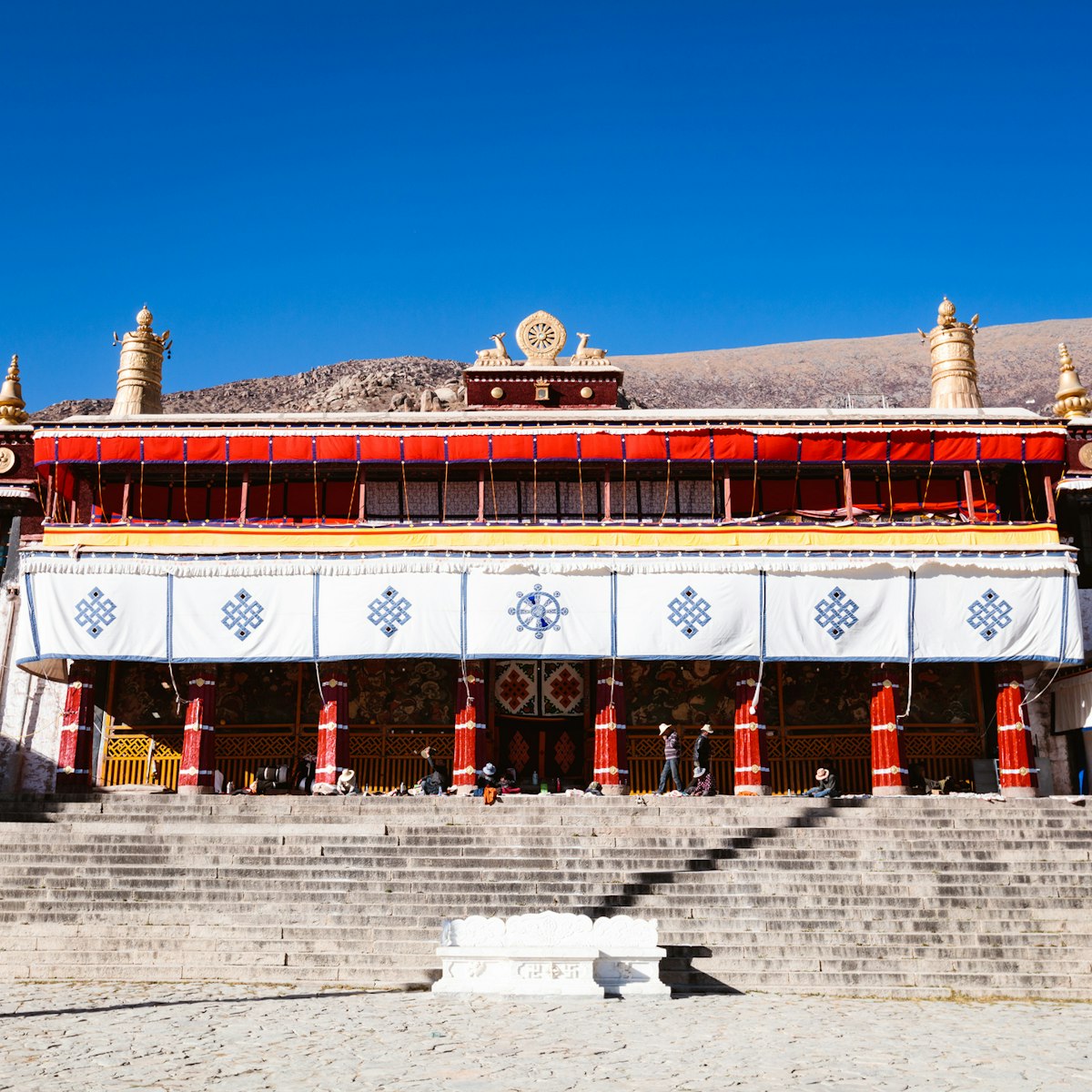For those with an interest in Tibetan Buddhism, Drak Yerpa hermitage, about 30km northeast of Lhasa, is one of the holiest cave retreats in Ü. Among the many ascetics who have sojourned here are Guru Rinpoche and Atisha (Jowo-je). King Songtsen Gampo also meditated in a cave, after his Tibetan wife established the first retreat. The peaceful site (4400m) offers lovely views and is easily combined with Ganden Monastery as a full-day trip.
At one time the hill at the base of the cave-dotted cliffs was home to Yerpa Drubde Monastery, the summer residence of Lhasa’s Gyutö College at the Ramoche Temple. The monastery was destroyed in 1959. Monks have begun to return to Yerpa but numbers are strictly controlled by the government, which carries out regular patriotic study sessions.
From the car park, take the left branch of the stairway to visit the caves in clockwise fashion. The first caves are the Rigsum Gompo Cave and the Demdril Drubpuk, the cave where Atisha (shown in a red hat) meditated as part of his 12 years spent proselytising in Tibet. Look for the stone footprints of Yeshe Tsogyel in the former and the fifth Dalai Lama outside the latter. At one nearby cave pilgrims squeeze through a hole in the rock wall; at another they take a sip of holy water.
The yellow Jamkhang has an impressive two-storey statue of Jampa flanked by Chana Dorje (Vajrapani) to the left and Namse (Vairocana) and Tamdrin (Hayagriva) to the right. Other statues are of Atisha (Jowo-je) flanked by the fifth Dalai Lama and Tsongkhapa. The upper cave is the Drubthub-puk, offering an upper view of the Jampa statue next to the quarters of the Dalai Lama. Continuing east along the ridge a detour leads up to a chörten that offers fine views of the valley.
Climb to the Chögyal-puk, the Cave of Songtsen Gampo. The interior chapel has a central thousand-armed Chenresig (Avalokiteshvara) statue known as Chaktong Chentong. Pilgrims circle the central rock pillar continually. A small cave and statue of Songtsen Gampo are in the right-hand corner.
The next chapel surrounds the Lhalung-puk, the cave where the monk Lhalung Pelde meditated after assassinating the anti-Buddhist king Langdharma in 842. A statue of the monk wearing his black hat occupies the back room. Look also for the photo of Drak Yerpa dating from 1937.
The most atmospheric chapel is the Dawa-puk (Moon Cave), where Guru Rinpoche (the main statue) is said to have meditated for seven years. Look for the rock carvings of Drölma and Chenresig in the left corner of the ante-room and the stone footprints (one of his boot, one with his toes) of Guru Rinpoche in the inner room, to the right.
Below the main caves and to the east is the yellow-walled Neten Lhakhang, where the practice of worshipping the 16 arhats was first introduced. Below here is where Atisha is said to have taught. A 15-minute walk takes you around the holy mountain of Yerpa Lhari, topped by prayer flags and encircled by a kora.
There are several caves and retreats higher up the cliff-face and some fine hiking possibilities in the hills if you have time, including a half-day high kora. A pilgrim guesthouse by the car park offers simple food and accommodation.
If you are here in September, specifically the 10th day of the seventh Tibetan lunar month, head here for the Yerpa tsechu festival, during which a large thangka is unveiled and cham dances are performed.
The paved road from Lhasa crosses the prayer-flag-draped 3980m Ngachen-la before turning into the side valley at Yerpa village and passing two ruined dzong and a large disused dam en route to the caves, 10km from the main road. The paved side road to Drak Yerpa makes for a good uphill biking destination.
A daily pilgrim bus leaves from Barkhor Sq but foreigners currently can't take it. Drivers often call the site ‘Drayab’.




